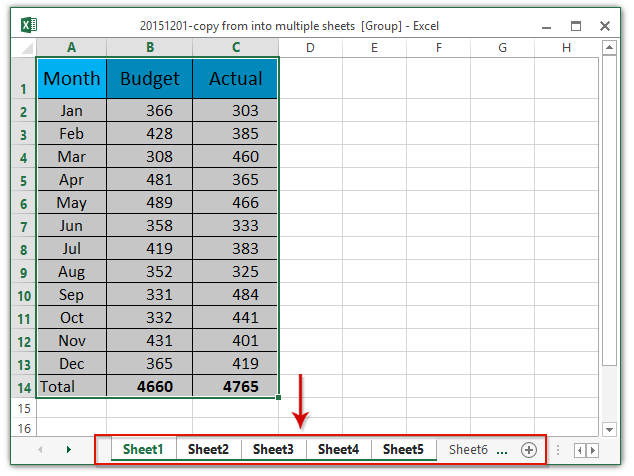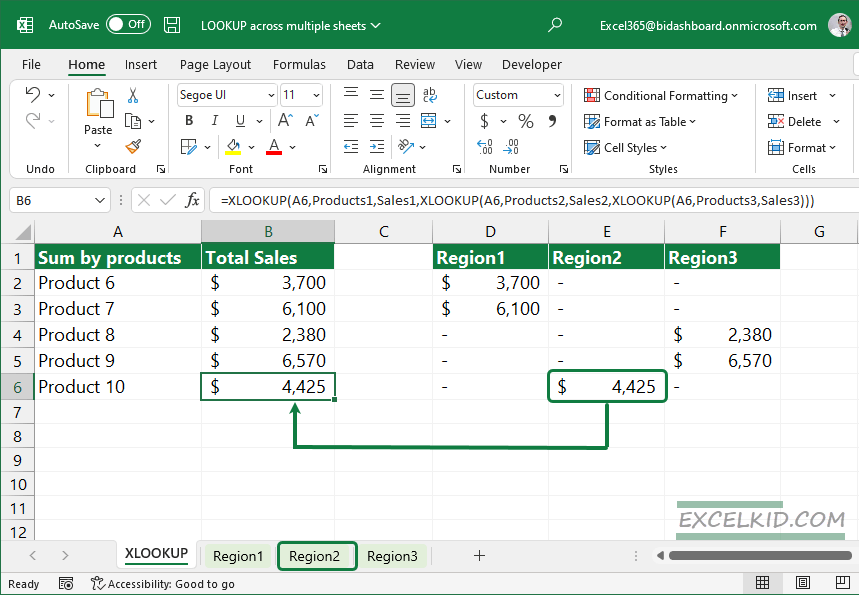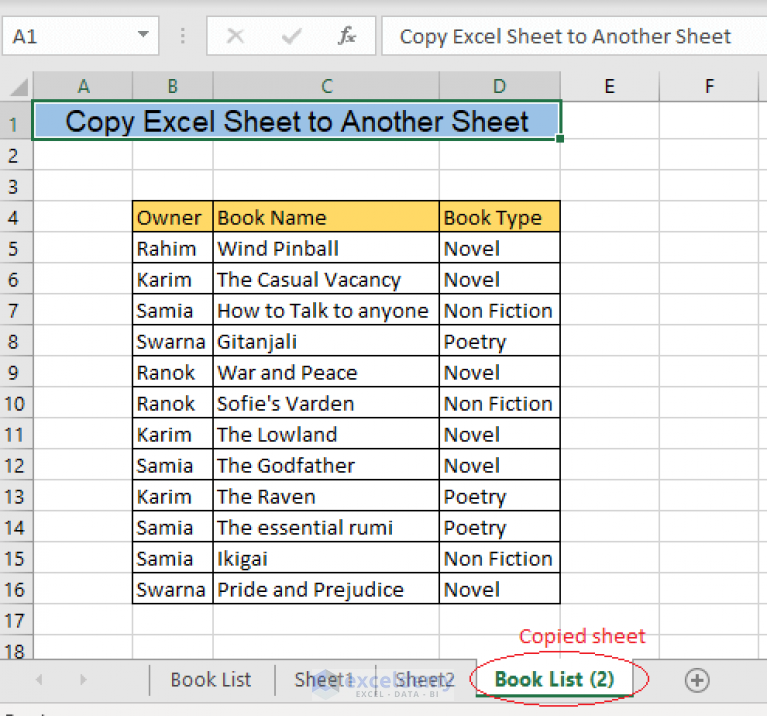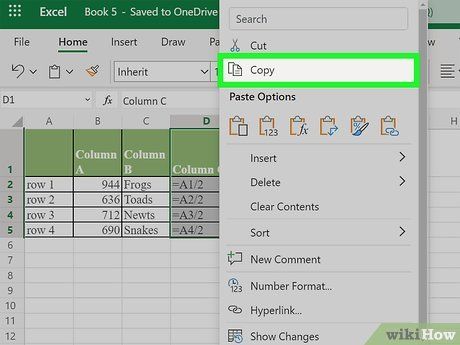5 Ways to Copy Data Across Excel Sheets Fast

When working with large datasets in Excel, efficiently copying data between sheets can significantly boost your productivity. Whether you're merging data from multiple sheets, creating backups, or organizing data for a comprehensive analysis, there are several methods you can use to streamline this process. Here are five effective ways to copy data across Excel sheets quickly:
1. Simple Copy-Paste Method

The simplest way to copy data is using Excel's built-in copy-paste functionality:
- Select the range of cells you want to copy.
- Press Ctrl + C (or right-click and choose 'Copy').
- Navigate to the target sheet.
- Select the cell where you want to paste the data and press Ctrl + V or right-click and select 'Paste'.
Important Tips for Copy-Paste:

- Use Paste Special: If you want to paste only values, formulas, formats, or comments, you can use Paste Special by pressing Ctrl + Alt + V or choosing the option from the right-click menu.
- Paste into Filtered Range: This can be tricky since Excel might paste data outside the filtered range. Ensure you are careful to maintain data integrity.
⚠️ Note: When pasting into an existing dataset, ensure you're not overwriting important information accidentally.
2. Using Excel's Drag and Drop

For smaller datasets, or when sheets are visible on the same screen, Excel's drag-and-drop feature can be quite handy:
- Select the range to copy by clicking and dragging over the cells.
- With the selection active, hold the right mouse button and drag to the target sheet's tab, then release over the tab to move to that sheet.
- Once on the new sheet, drag to your desired starting cell and release the mouse button, choosing 'Copy' from the options menu.
Notes on Drag and Drop:

- This method might not work if you have a lot of sheets or if your data spans many rows or columns due to screen limitations.
- Consistent Size: Both sheets must have enough space for the data to be copied without extending beyond the sheet's limits.
📌 Note: Ensure the source and destination sheets are large enough to accommodate your data to avoid cropping.
3. Copy Data with Excel VBA Macros

For more complex or repetitive tasks, creating a VBA macro can automate the process:
- Press Alt + F11 to open the VBA editor.
- Insert a new module with Insert > Module.
- Copy the following code into the module:
| Code |
|---|
Sub CopyDataBetweenSheets()
Sheets("Sheet1").Range("A1:B10").Copy Destination:=Sheets("Sheet2").Range("A1")
End Sub
|

- Replace 'Sheet1' and 'Sheet2' with your actual sheet names.
- Run the macro by pressing F5 in the VBA editor or by setting up a button on the Excel sheet.
Advantages of VBA:

- Automation: VBA can handle complex operations like copying filtered data or data based on certain conditions.
- Speed: For repetitive tasks, VBA significantly reduces manual labor.
- Reusability: Once written, macros can be reused across different workbooks.
💻 Note: Always backup your work before running macros, as they can alter data irreversibly.
4. Power Query for Data Consolidation

If you need to combine or transform data from multiple sources, Power Query is an excellent tool:
- Go to the 'Data' tab in Excel and choose Get Data > From Other Sources > Blank Query.
- In the Power Query Editor, select New Source > Excel, and navigate to your workbook.
- Select and load the sheets you want to consolidate.
- Use Power Query's merge, append, or transform functions to combine data as needed.
Power Query Benefits:

- Data Transformation: Can handle structured, unstructured, or even web data before loading it into Excel.
- Automation: Once set up, Power Query queries refresh automatically with updates to source data.
- Data Cleaning: Includes functions for removing duplicates, handling null values, and more.
🔍 Note: Power Query might be overwhelming for beginners, but the learning curve is worth it for dealing with complex data manipulations.
5. Linking Sheets with Formulas

If you need live updating data, consider linking sheets directly:
- In the target cell, type = followed by the name of the source sheet in brackets, e.g., 'Sheet1'!
- Follow with the cell reference you want to link, like A1.
- Your formula will look like this: =Sheet1!A1.
Advantages of Linking:

- Dynamic Updates: Changes in the source sheet are automatically reflected in the target sheet.
- Integrity: Ensures data consistency across sheets without having to manually copy and paste.
- Simplicity: No need for complex macros or external tools.
🔄 Note: Use this method cautiously in large spreadsheets, as excessive linking can slow down Excel’s performance.
By understanding these five methods, you’re equipped to handle various scenarios of data copying in Excel. Each approach has its benefits depending on your specific needs, whether it’s for simplicity, automation, or ensuring real-time data consistency.
The key is to choose the method that aligns best with your workflow, the complexity of your data, and the frequency of the task. With these tools at your disposal, managing and transferring data between Excel sheets will be a breeze, saving you time and reducing errors. Now, let’s answer some common questions related to copying data in Excel:
Can I copy non-adjacent cells from one sheet to another?

+
Yes, select non-adjacent cells by holding Ctrl while selecting, then copy and paste as usual. Alternatively, use Power Query or VBA for more complex scenarios.
What should I do if Excel says there’s not enough memory to perform the copy operation?

+
If you encounter memory issues, try breaking down the copy operation into smaller chunks, use Excel’s advanced features like Power Query, or consider using a database for larger datasets.
How can I keep the formatting when copying data?

+
Use Paste Special with the ‘All’ option or ‘Formats’ to ensure the formatting is transferred. For dynamic updates, consider linking the cells with formulas to maintain both values and formatting.
Is there a way to automate copying data between sheets on a schedule?

+
Yes, you can write VBA macros that trigger on workbook open or use Excel’s built-in features like Power Query with scheduled refresh options if your Excel version supports it.



